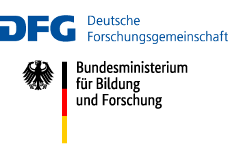Electrostatically assisted production of powder coatings
Promotion
Funded by the BMBF, coordinated by the DFO
Project title
Interaction between electrostatics and flow mechanics in the production of thin powder coatings
Project leader
Prof. Dr.-Ing. habil. Martin Sommerfeld
Realized by
Dipl.-Phys. Carl-Uwe Böttner
The final report on this project is avaible through the University Library and TIB Hannover
Short description of the project
The goal of this project was to study powder coating processes with respect to flow conditions, electric fields, and geometry of the coated object. In order to achieve this, a combination of experimental and numerical studies were proposed. An existing CFD-Code for threedimensional disperse multi-phase flows was extended to incorporate particle laden flows in electric fields. The obtained results were compared to experimental results regarding local and integral variables. After a successful comparison, a numerical prediction for the effectiveness of the first application and layer thickness distribution dependent on process conditions.
For this purpose the equations for electrostatic forces are implemented in an existing CFD-Code for two-phase flows. The necessesary data for validation were determined at the partner institute IPA (fhg) in Stuttgart in a real powder coating chamber.
Initially simulations were conducted in two dimension in a vertical symmetry plane. A good match with experimental data was achieved close to the nozzle, but in the bulk flow or close to the substrate this approach is to simple and fails.
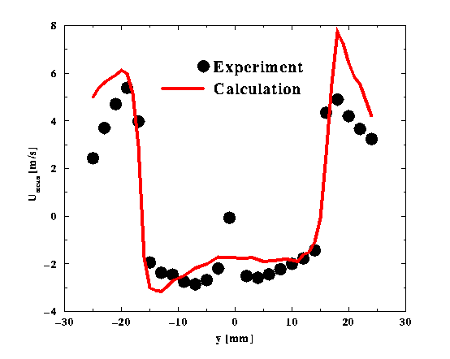 Photo 1: 2D Calculation on a symmetry plane
Photo 1: 2D Calculation on a symmetry plane
The two individual images from a video sequence show the influence of the applied high voltage, in this case the particle flow was visualized by means of a laser light section. The measurements were carried out at the pilot plant of the IPA Stuttgart of the Fraunhofer Gesellschaft.
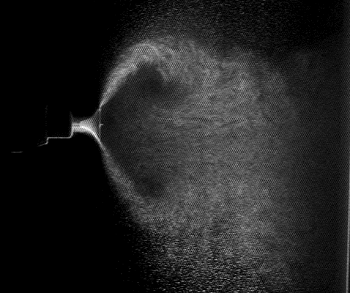 |
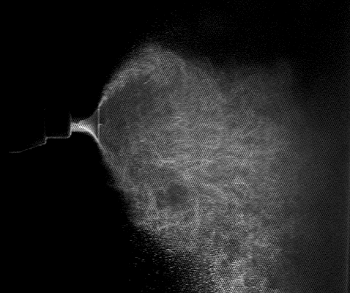 |
| Photo 2 and 3: Video sequence of a particle flow when applying high voltage | |
In the case of the three-dimensional calculations, the lattice generation is, of course, more complicated. The grids of the impact plate nozzle are shown in the following figures:
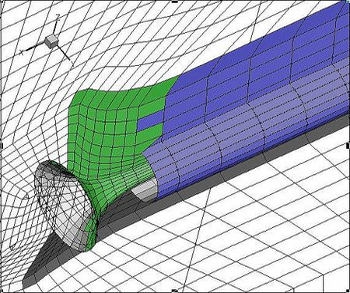 |
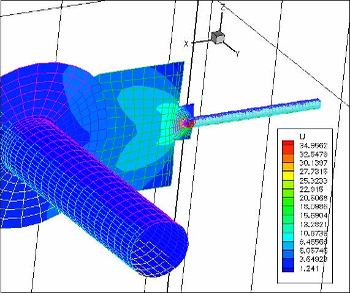 |
| Photo 4 and 5: Simulation of the impact plate noozle | |
The coating process to the resulting layer thickness was calculated for two different bodies, a plate and a tube. The velocity vectors of the deposited particles in the last time step give an impression of the coating process:
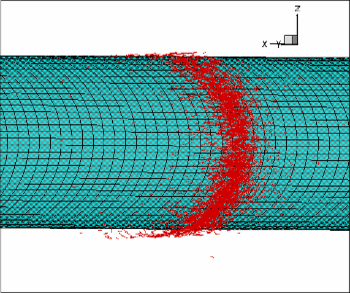 |
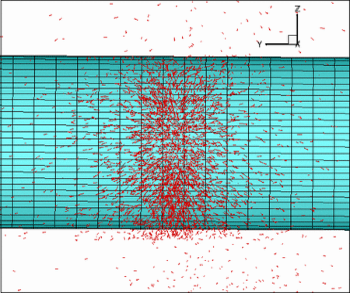 |
| Photo 6 and 7: Coating process of the deposited particles | |
The expected layer thickness can be modeled from this, but it is also possible to make predictions about the shape of the layer within limits. The difficulty here is the melting-in process. In the following, the calculated layer thickness distributions are shown on the tube, on the left with the flat jet nozzle and on the right with the impact plate nozzle:
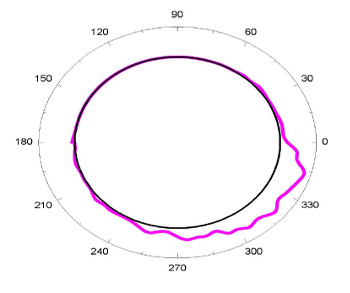 |
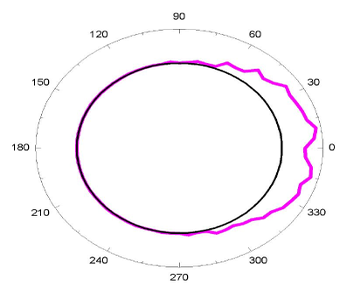 |
| Photo 8 und 9: flat jet noozle and impact plate noozle | |
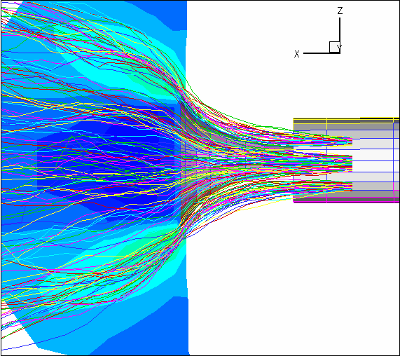 |
| Photo 10: Melting process |






